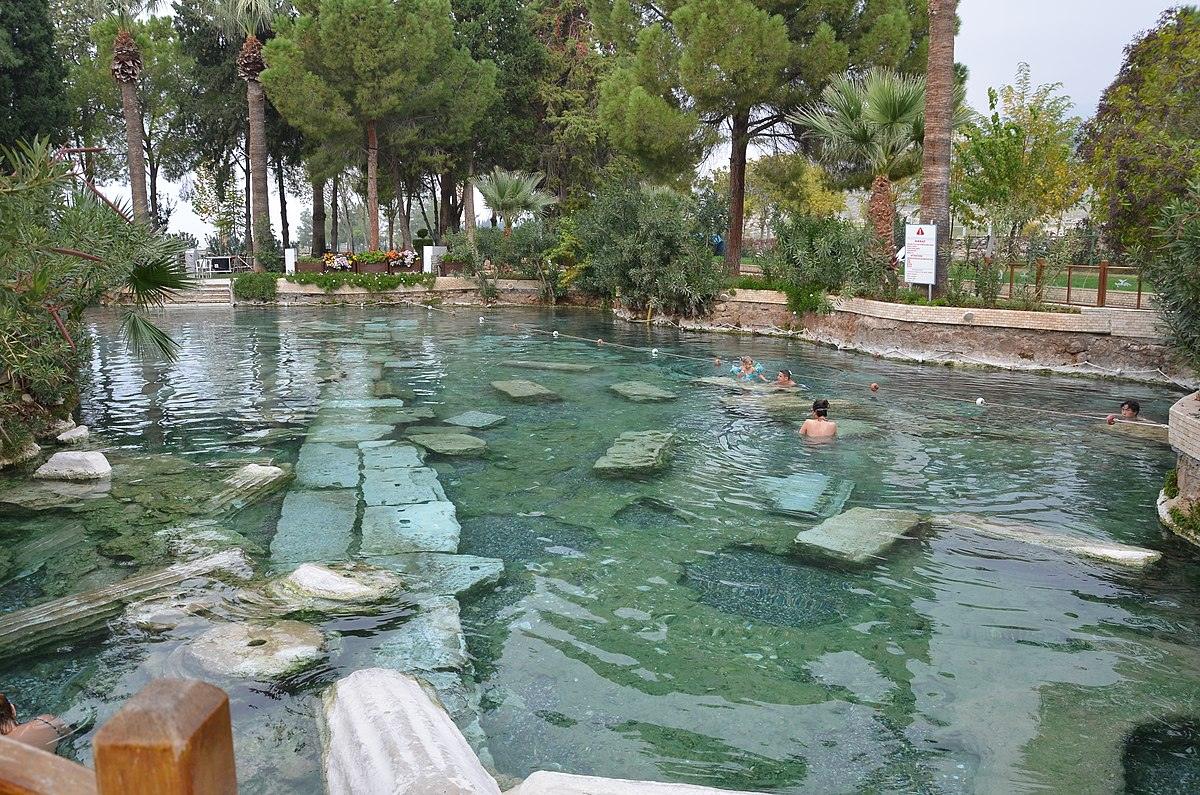
Once believed to have hosted the Ptolemaic queen of Egypt herself, the Cleopatra Pools – also known as the Pamukkale Antique Pool – is a popular tourist attraction in modern-day Turkey.
The Cleopatra Pools are located in what was once the ancient Greek city of Hierapolis. Due to the thermal springs there, the location drew a variety of ancient peoples to settle in the area, including the Phrygians, Greeks, and Romans.
Sometime in the 13th century, the ancient city was abandoned, and its splendid ruins remained largely unknown until excavations began in the 19th century. Nowadays, as in antiquity, the thermal springs attract thousands of visitors looking to relax in the waters.
Ancient Hierapolis
The site of the Cleopatra Pools and surrounding thermal springs appears to have been settled by the Phyrgians around the first half of the 7th century BC, when they built a temple to the goddess Cybele.
When Greek colonists settled in the area, they assimilated the pre-established religious practices with their own. Due to the release of toxic gasses from a hot spring inside a cave, the Greeks may have associated the site with the god Hades and the underworld.
The city of Hierapolis flourished in the area during the 2nd century BC, under the rule of the Seleucid Empire, one of the Hellenistic successor states to Alexander the Great’s short-lived empire.
After the battle of Magnesia in 190 BC, the city came under the control of Pergamon, another ancient Greek power in Asia Minor. In 133 BC, Hierapolis was bequeathed to Rome, along with the Pergamon itself after the death of its final ruler Attalus III.
The Romans, like previous peoples with an established presence in the area, were keen to take advantage of the thermal springs around Hierapolis, such as the ones now known as Cleopatra’s Pools. Cleopatra may have swum there when the region was administered by Mark Anthony as part of the Second Triumvirate.
Cleopatra’s Pools
Today, Cleopatra’s Pools are popular with visitors who wish to take advantage of the purported therapeutic benefits of the mineral-rich waters. In this way, the lasting appeal of the springs at Hierapolis has changed little in over 2,000 years.
According to TripAdvisor, “The warm mineral-rich “champagne water” that fills the pool sits just under 100°F and is believed to have therapeutic healing properties.”
The site itself is also unique visually, complete with the remnants of ancient columns and the shade of surrounding palm trees.
See all the latest news from Greece and the world at Greekreporter.com. Contact our newsroom to report an update or send your story, photos and videos. Follow GR on Google News and subscribe here to our daily email!



